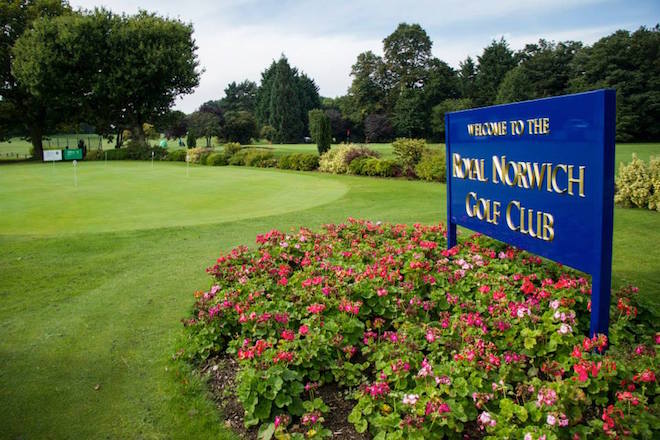The golf courses put up for sale this year
This year a number of golf courses have been put on the market. Here is an overview of 17 of the biggest of them.
In January Nailcote Hall Hotel, Golf and Country Club in Coventry, the location for the annual British Par 3 Championship, was put up for sale because its owner, Rick Cressman, decided to retire.
“I am sure I am still going to be about but I turn 66 this year and this is a very demanding business,” said Cressman.
“It’s time for some fresher, younger legs to come in.”
Later in the year the club announced that it had changed its plans and it is no longer on the market.
Lakeside Lodge Golf Centre in Cambridgeshire came on the market in March with a guide price of £5 million when its owners also decided to retire.
The club makes more than £600,000 per year in earnings before interest, tax, depreciation and amortisation (EBITDA) and facilities include an 18-hole golf course, a pitch and putt course, an 18-bay driving range, conference rooms, offices, a ten pin bowling alley, seven lodges, five letting bedrooms and a health club.

Blacknest Golf and Country Club
Blacknest Golf and Country Club in Hampshire was put up for sale at a guide price of £1.8 million.
Owned by Greenbanks Golf, the venue includes an 18-hole, par 69 golf course, a nine-hole academy course and a driving range.
A modern, purpose-built clubhouse and greenkeeping complex are also on site, as well as conference and wedding facilities and a restaurant.
This year The Hertfordshire Golf & Country Club was sold to Wescom Group for an undisclosed sum with a guide price of £8 million. As part of the deal Crown Golf continue to operate the club which comprises an 18-hole Nicklaus-designed course set in 186 acres, a Grade II listed mansion that incorporates the golf clubhouse and the health club, which also included planning consent for 95 bedrooms, a new health club and six conference suites.

Thetford Golf Club’s members bought their club this year
Thetford Golf Club in Norfolk’s members completed the purchase of the club from the Crown Estate after 105 years of tenancy.
Club manager Malcolm Grubb said: “We were able to finance the purchase thanks to our own members taking out debentures and it may take another 10 years or so to complete the repayments but after that we will have no debts to pay.
“We have had quite an influx of new members lately and they are likely to benefit more than anybody as they will eventually inherit one of the finest golf courses in East Anglia.
“Removing the burden of a high rent means we can concentrate on the repayments while also re-investing in the club and the course.”

One of the biggest transactions of 2017 was Royal Norwich Golf Club, which sold its land to developer Persimmon for £17 million, to be redeveloped into housing.
The golf club will relocate to Weston Park, following the acquisition of its existing course from Weston Park Golf Club.
However the biggest deal of 2017 involved QHotels, which runs nine major golf resorts in England and one in Scotland, and was acquired for about £525 million.
The UK’s largest golf resort operator, which itself acquired six De Vere golf venues just three years ago, was bought by real estate firm Aprirose.

The Westerwood Hotel & Golf Resort
The clubs involved were The Westerwood Hotel & Golf Resort in Scotland, Slaley Hall in Northumberland, Aldwark Manor Golf & Spa Hotel, Forest Pines Hotel & Golf Resort and Oulton Hall in Yorkshire, Mottram Hall in Cheshire, Belton Woods in Lincolnshire, Telford Hotel & Golf Resort in Shropshire, Dunston Hall in Norfolk and Hellidon Lakes Golf & Spa Hotel in Northamptonshire.















Same old story – a well run business runs well – but too many golf clubs are still controlled by old school thinkers who refuse to acknowledge changing times. Clubs also need to genuinely embrace juniors, women – and dispense with stuffy traditionalism. Golf clubs need to become fun places to be. Look at what the National Trust has done to encourage a whole new generation of members – they’ve transformed visitor profiles in just 10 years.
Yes, just the tip of the iceberg. The US has been experiencing this for years. Learn a hard lesson from us and lay out an alternative plan for smaller time efficient facilities to attract the new age golfer. Those traditionalists now playing will be quickly fading away along with full size unsustainable courses. Empty fairways pay no bills.
A great view of the 13th at Westerwood and beyond in your article!
The cycle of consolidation, restructuring and repurposing is upon the golf industry – golf industry seems to be in the mature phase and thus we should see hybrid use of club facilities (jogging/cycling come to mind) or clubs with little visionary leadership will opt for the quick exit – it leaves remaining Club survivors with more market to attract more members and more visitor rounds – every golf club needs to decide on a 20 year plan right now – I predict a ton of property moving ownership plus more 9 hole facilities popping up until that portion is also sold for property
Your right, “Hybrid” is the word, a blend of traditional golf on smaller quicker playing facilities, allowing a full par & play golf game in half the time. Starting with a proportionally redesign distance-to-weight golf ball for shorter course play, makes the game efficient & economy minded. It’s the simplest way to prepare for the new generation…. just, adjust the ball to conform to the new requirements.!